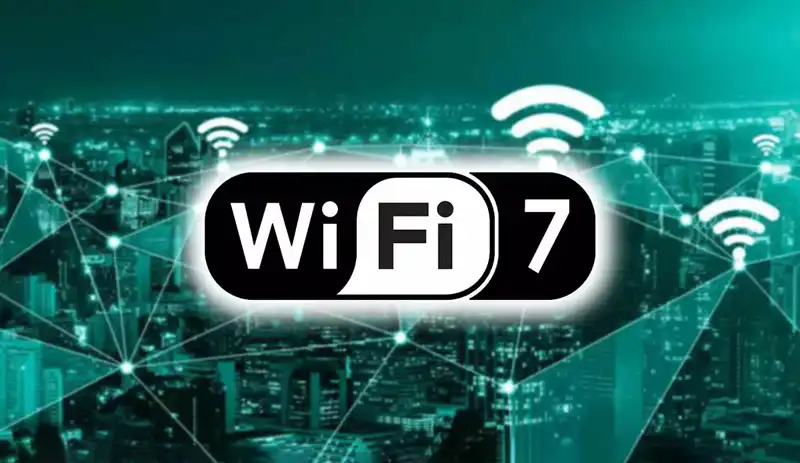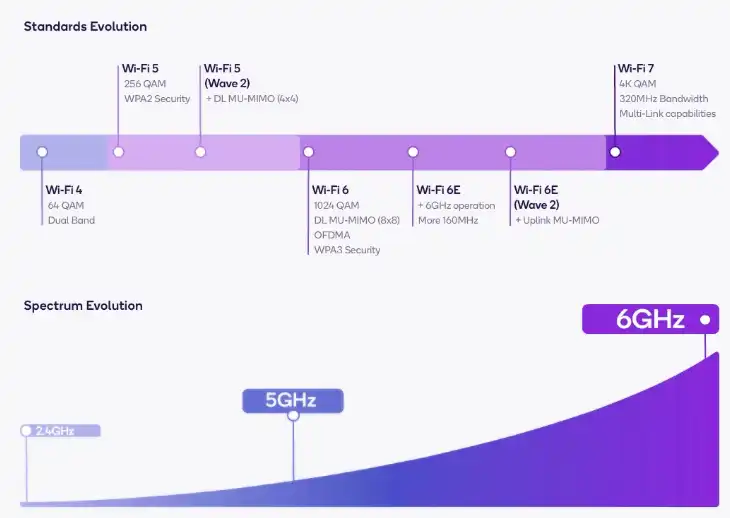You can also be interested in these:
- Does using an Ethernet cable affect the WiFi speed?
- Devolo WiFi 6 3000 and 5400 repeater full review
- Why won’t my laptop connect to WiFi? 17 step-by-step solutions
- Arris Surfboard SB8200 Docsis 3.1 cable modem review
While many people have only recently switched to Wi-Fi 6, and some are considering switching to Wi-Fi 6E, their replacement is already under development. The next major advancement is Wi-Fi 7, which, like its predecessors, promises quicker connections, reduced latency, and the ability to seamlessly handle more connections than before.

We are aware that you have heard all of this before. But this time, Wi-next Fi’s development represents a significant advancement, at least in terms of speed. The new wireless protocol is known as Wi-Fi 7, or “802.11be” if you like the more euphemistic Wi-Fi term. Even while it’s still in development, when it does launch, there will undoubtedly be a large number of new routers, mesh networks, and client devices.
What is Wi-fi 7?
Wi-Fi 7 is all about connections that happen instantly, in contrast to Wi-Fi 6, which only delivers slight performance improvements over Wi-Fi 5. Because of this, the acronym “802.11be EHT” for Extremely High Throughput has become the industry standard.
This is why: The new standard might achieve theoretical peak data rates of much more than 40Gbps, however technical details are still being ironed out. That is amazing. To put that in context, Wi-Fi 7 will be close to six times better than Wi-Fi 5, which has a maximum data rate of 6.9Gbps, and much more than four times quicker and faster than Wi-Fi 6 and Wi-Fi 6E, both of which can reach maximum data speeds of 9.6Gbps.
Wi-Fi 7 will use new technologies to lower latency, expand network capacity, and improve efficiency in addition to providing previously impossible data speeds. You’re undoubtedly already familiar with these assertions and buzzwords from the 2019 launch of Wi-Fi 6 devices.
Why is Wi-Fi 7 necessary?
Granted, many of us still rely on Wi-Fi 5 devices and routers, which is now a nearly ten-year-old standard. Even though they are much more recent, Wi-Fi 6 and 6E, apart from flagship smartphones, simply haven’t entered the bulk of consumer devices yet. Why then is the networking sector so motivated to advance wireless technology? Simply put, it’s because we’re seeing a great deal more development in other fields over the coming years that could profit from enhanced wireless performance.
Although the Internet of Things (IoT) and video conferencing technologies are still in their infancy today, it is becoming more and more likely that they will gain in popularity over the next several years. This is especially true for the commercial market, where industrial IoT devices like detectors, sensors, and security gear might easily push the boundaries of the current Wi-Fi standards. But many of us even have numerous smart speakers at home, along with connected lightbulbs, outlets, and a wide range of other gadgets. For instance, a lot of coffee makers have internet connections.
Which Bands Does Wi-Fi 7 Support?
Wi-Fi 7 routers and clients will function on the 2.4GHz, 5GHz, and 6GHz radio bands, just like Wi-Fi 6E. The upgraded OFDMA operations under the new standard will make use of Multiple Resource Units (MRUs), which are intended to significantly cut down on latency and interference.
The major improvement is a 16-fold increase in MU-MIMO streams. This is a major factor in the market’s ability to claim such enormous overall throughput increases against Wi-Fi 6.
Wi-Fi 7 will also have the Multi-Link Operation (MLO) technology, which enables devices to send and receive data concurrently over several radio bands to establish a single aggregated connection. This will increase throughput speed while also lowering latency and enabling data to move without interruption from network activity.
What advantages would Wi-Fi 7 offer?
To maintain dependable low latency performance, Wi-Fi 7 will be quicker, more connection-friendly, and more adaptive.
These advantages will support AR and VR applications that need high throughput and low latency, as well as enhanced cloud gaming and high-quality video delivery. In addition to addressing congestion and interference, Wi-Fi 7 also addresses heavily populated device areas and areas with overlapping neighboring networks. The latter is more crucial for businesses and bigger venues.
How fast exactly Wi-Fi 7 will be?
Wi-Fi 7 will offer greater spectrum bandwidth than ever before, which is one more critical step in the process of raising transmission rates.

Wider channels enable quicker throughput with less interference, all else being equal. What kind of distance are we dealing with? In Wi-Fi 6, the channel width doubled from 80MHz to 160MHz. Wi-Fi 7 will provide 320MHz of channel capacity across the 2.4GHz, 5GHz, and 6GHz radio bands, which is another twofold increase. Puncturing, another feature of Wi-Fi 7, prevents problems on a segment of a channel from giving the lives of the network unusable. Additionally, Wi-Fi 7 will offer 4096 Quadrature Amplitude Modulation (QAM), an increase from Wi-Fi 6’s 1024 QAM. Over Wi-Fi 6, the additional signal modulation can result in a throughput gain of 20%.
When Wi-Fi 7 will be available?
It’s important to remember that Wi-Fi 7 is currently very far from being a codified specification. Wi-Fi 7 hasn’t even been awarded that name by the Wi-Fi Alliance yet. Therefore, it should come as no surprise that consumer electronics won’t be supporting it any time soon. The protocol’s development is expected to be finished in 2023 or 2024. Even at that, you might need to wait one or two more years for widespread adoption.
Even though Wi-Fi 6E has been in place for a full year, the majority of nations have not yet made the new 6GHz spectrum available for public use. Key markets like the US, UK, and EU nations have delicensed the spectrum, enabling it to be utilized for indoor applications, according to this list maintained by the Wi-Fi Alliance. There are still a few significant exceptions, though. Australia and Japan, for instance, are still debating taking action, while other significant countries, like India, have not at all complied with the demands of the sector.
Conclusion
If you’re an early supporter and adopter of VR and other technologies and innovations that require both fast throughput and low latency, all of this is exciting. Wi-Fi 7 may be pushed onto us all by the Metaverse, according to Qualcomm, but only time will only tell if either technology will become widely adopted.
More stories like this
- Does using an Ethernet cable affect the WiFi speed?
- Devolo WiFi 6 3000 and 5400 repeater full review
- Why won’t my laptop connect to WiFi? 17 step-by-step solutions
- Arris Surfboard SB8200 Docsis 3.1 cable modem review
- The Netgear R6700: The best DD-WRT router in 2021
- How to bypass Spectrum cable box to other TVs at home
